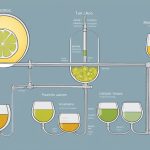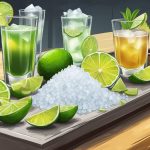Have you ever wondered what happens if you let beer ferment too long? As a beer enthusiast, I’ve had my fair share of brewing adventures, and I can tell you that the consequences of over-fermenting beer can be both fascinating and disappointing.
When it comes to brewing beer, fermentation is a crucial step. It’s during this process that the yeast consumes the sugars in the wort and converts them into alcohol and carbon dioxide, giving beer its signature flavors and aromas. Typically, the fermentation process takes around one to two weeks, depending on the style of beer and the specific yeast strain used.
However, if you let beer ferment for too long, several things can happen. First and foremost, the yeast will continue to consume any remaining sugars in the beer. This can result in an extremely dry and highly alcoholic beverage. While some beer styles, like Belgian Tripels or Barleywines, benefit from higher alcohol content, others may become unbalanced and harsh.
Another consequence of over-fermentation is the depletion of desirable flavor compounds. During the fermentation process, yeast produces a variety of flavor and aroma compounds, such as fruity esters and spicy phenols. These compounds contribute to the overall character of the beer. If fermentation goes on for too long, the yeast may break down these compounds, leading to a loss of complexity and depth in the final product.
Furthermore, over-fermentation can result in off-flavors. When yeast consumes sugars, it produces alcohol and carbon dioxide, but it also produces other byproducts. Some of these byproducts, such as acetaldehyde or diacetyl, can give beer off-flavors that resemble green apple or butterscotch. While these flavors might be desirable in small amounts, an excessive presence can be quite unpleasant.
It’s worth noting that the consequences of over-fermentation can vary depending on the specific beer style and the yeast strain used. For instance, certain Belgian yeast strains are known for their ability to tolerate higher levels of alcohol and prolonged fermentation without compromising the flavor profile.
So, what can you do if you accidentally let your beer ferment for too long? Firstly, taste the beer and assess its flavors. If it’s overly dry or harsh, you can try blending it with another beer to balance out the flavors. Alternatively, you can experiment with aging the beer to see if the flavors mellow out over time. But keep in mind that not all beers will benefit from extended aging.
As an avid homebrewer myself, I’ve learned the importance of closely monitoring the fermentation process. It’s crucial to follow the recommended fermentation times for each specific beer style and to pay attention to the yeast’s behavior. By maintaining control over the fermentation process, you can ensure that your beer turns out delicious and well-balanced.
In conclusion, over-fermenting beer can have a significant impact on its flavor, aroma, and overall quality. While some beer styles may benefit from a longer fermentation period, it’s essential to exercise caution and ensure that the beer doesn’t become unbalanced or develop off-flavors. Remember, brewing beer is both an art and a science, and mastering the fermentation process is key to crafting exceptional brews.







